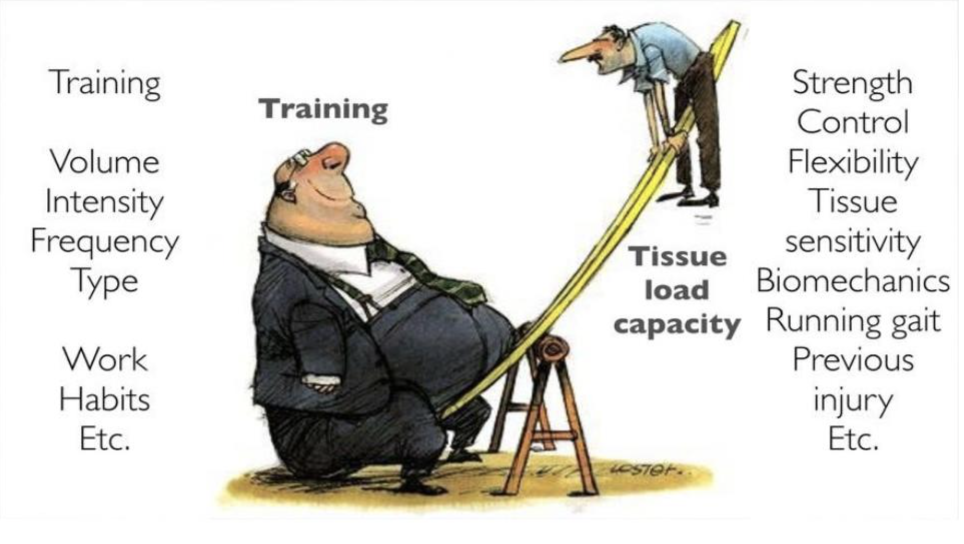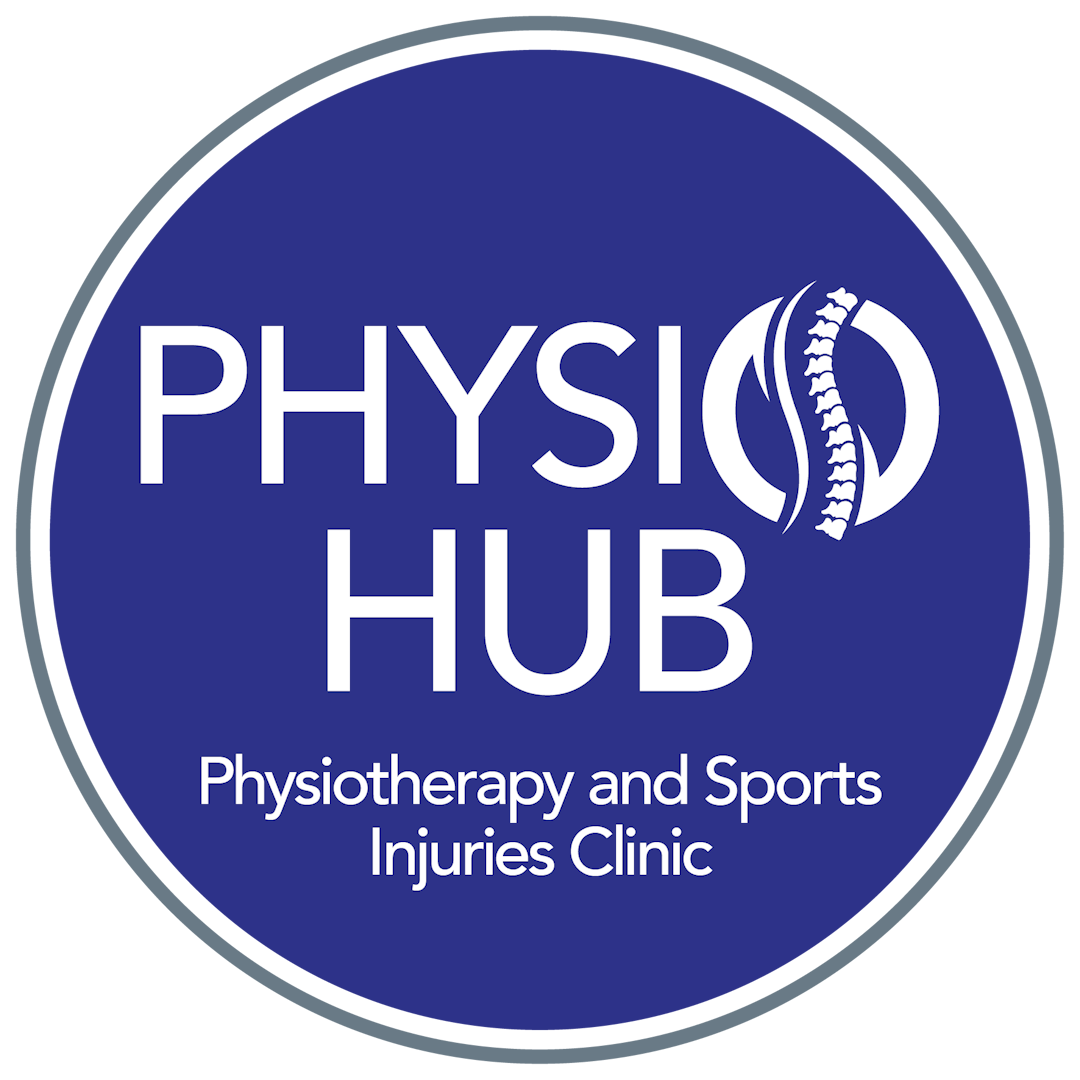We’ve had a lot of clients coming in to the clinic lately with running-related aches and pains so I wanted to share some simple advice on how to prepare yourself properly for your run. A thorough warm-up for running or jogging is often overlooked but remarkably important for improving performance and decreasing the chance of injury. Whether you are a track specialist or a 5k weekend warrior, the drills in this article will help to promote a more efficient, dynamic running technique, improve range of motion and muscular function, whilst providing the appropriate intensity for your intended training session.
Part 1 – General warm-up exercises
At this stage, you are probably feeling cold, tight, sore and not ready to perform. The aim is to loosen the muscles and joints here and start to warm the body system. The following movements can be incorporated into the general warm-up; the aim here is active preparation.
- Light to Moderate Jog 400m
- Leg Swings
– Lunges
– Squats
- Grapevine
– Side to Side Skip
– Backwards Run
Note: Static stretching is not specifically included in the ‘active warm-up’ however if you have any defined areas that require specific stretching in order to improve range of movement (flexibility) e.g. foam rolling a tight calf or glute muscle - this can be added here.
Part 2 – Pre-run drilling
So if you want to be confident, strong, steady and pain-free, book your session with us and come chat to our expert physiotherapists and get in the driver's seat of your osteoporosis diagnosis.
The aim at this stage is to improve running efficiency and technique, enhance energy recoil from the ground and to promote a positive running gait (stride). E.g. running on the forefoot.
MARCHING
Purpose: Promotes correct leg action and active foot plant
- Description:
Hands on hips
– Drive heel to butt
– Stomp on forefoot under hips
Cues:
Front of shoe points in the direction of travel
– Heel of shoe pulls up to butt
- Sets & Reps:
3 sets x 15m
Knee Drives (skips)
Purpose:
Promotes recoil (bounce from the ground), switches on key muscles and is an active progression from the marching drill (drill 1)
Description:
Similar to the march (drill 1) with a skipping action (small air time) included
Cues:
Skip and actively plant foot back under hips
Sets & Reps:
3 sets x 15m
Butt Flicks
Purpose:
Promotes correct leg action in the swing leg
– Builds towards running specific action and tempo
Description:
Running action with heel coming to butt
– Slowly transitioning forward
Cues:
Pretend there is a hurdle in front of each step – Fast leg recovery
Sets & Reps:
3 sets x 15m
Part 3 – Running/jogging specific intensity
The final stage of the warm-up should involve working your running efforts towards the intensity required for your specific run or jog. This will be extremely individual depending on the distance and speed of the session. The golden rule here is basic, you must get up to your race or planned session speed prior to competing or participating. For endurance-based athletes, you should take your body close to or above session pace for a short duration. It takes time for your body to start delivering oxygen to your muscles at its most efficient rate, thus it’s important to prime the system by ramping up intensity to the desired level. This will improve the start of your session substantially.
- 2-6 minutes of near lactate threshold (beyond talking pace) running or of a similar rate to the planned session
For track-based athletes, the aim is to take your body to the speed at which you will run the session or competition.
- 4-6 efforts of 60-100m building intensity from 80-100%
- Maintain rest periods of 2-3 minutes between repetitions as the intensity increases
Load Management
Following on from our Episode on how to warm-up properly, it’s time to dive into one of the main issues that leads to an injury for runner’s – load management.
Overload is thought to be the main cause of 80% of running injuries (Depending on what study you read)
So how much running is too much?
Over the years I’ve done a lot of running training, competing in Sprint and Olympic distance Triathlons (5km and 10km runs in each, respectively) and I’ve made plenty of mistakes when it comes to over training. Once I was pushing myself by road-running between 8 to 10 km every day in the build up to a race and I developed shin splints that took me a few months to get rid of and ultimately resulted in me having to take a break from the running and miss a summer of competitions. No bueno! I learnt a valuable lesson regarding training intensity, frequency and recovery.
A lot of my clients have taken on new training programs that involve an increase from 2 runs a week to 4-5 runs a week. That is a huge jump and the human body requires a really solid base for that much running, something that most of us training up to our first 10km or Half Marathon of the season just don’t have! It’s easy to get excited by our weight loss goals or race times, but it is usually this sudden spike in training that results in a visit to the Physio Hub. Often it is a change in footwear or terrain too, but we’ll talk about this later.
Here are some more common errors with running training that can lead to injury:
- Returning to running after time off from an injury
- Returning back to training after a month or two of holiday
- Increasing intensity following a couple of weeks of illness where loads were reduced (shorter, less intense runs)
- Sudden changes in training goals or race distances
- A change in training surface, terrain (hills), intensity (e.g. intervals) or footwear
- The weekend warrior – someone who typically doesn’t do a lot during the week but goes all out in the weekend!
You may be thinking – so how do I structure my training program to get the best results and not overload myself?
Here’s a few ideas:
1. The 10% rule
The 10% rule is simply not increasing your weekly training loads by more than 10% from one week to the next. It is a very simple and often effective way to ensure that your loads are not increased too quickly. You need to consider what your baseline loads are, what surfaces you are normally training on (hills, grass, road etc), and the intensity of your training, as they will affect your overall training load and therefore injury and burn-out risk. BUILD SLOWLY!
2. Periodisation
Periodisation is used to structure training programs which involves planning a few weeks or months in advance. I know right, its time to get organised! Periodisation is often based around an end goal for example a certain distance or time that you would like to achieve. You also need to keep an eye on your overall well-being as your mood, energy and sleep quality are vital to your success. Your physiotherapist or coach will likely throw ‘easy’ or ‘recovery’ weeks in between challenging ones.
3. Consistency is key. Put on those shoes year round and stay active! If you slack off and miss a few weeks of training – be wise and start slowly again.
4. We are all different and hence, different training programs work best for different athletes because our capacity to adapt to mechanical stress is unique. Don’t just start a random 10km or half marathon training program that you found online – check in with a professional coach or a physiotherapist first who can tailor a training program specifically to you!
Footwear
What Shoe Shoud I Run In?
There is a considerable range of running shoes available on the market. There are multiple brands, styles and colours, as well as various shoes for specific types of running (e.g. road, trail, or track). It is vital to understand the makeup of a running shoe and your specific needs as an athlete - what would best suit them for their training and racing? Runners may even need more than one shoe if they train on both trail and road or require different types of trail shoes for different terrains. What footwear you should run in depends a lot on how your foot behaves when you take weight on it. If you are someone with a high arch profile or if you are an over-pronator (“flat footed”) this will affect the type of running shoe that you need.
Key Points When Considering Footwear:
1. Consider where you’re planning to run. Do you mostly hit the road? Or do you hit the trails and gravel paths? Your choices are road-running, trail-running or cross-training shoes.
2. Decide if you want more or less cushioning underfoot. Do you want to feel like you’re running on a cloud with maximum cushion or to feel the ground underfoot? Cushioning—the thickness of material under the midsole and the firmness of the foam—and heel drop are two factors to consider in the construction of a running shoe.
3. Understand whether you need a specific type of support for your gait. Most runners will be able to choose a neutral shoe, but if your foot tends to roll to the far outside or inside, there are shoes that can help you.
4. Make sure the shoe fits. Your shoe should fit well from the start with no breaking-in period.
5.How long should running shoes last? In general, a pair of running shoes should last between 400 to 500 miles of running (3 or 4 months for regular runners). Take a look at your shoes and check if the midsoles and outsoles are compressed or worn. If they are, it may be time for a new pair.
Getting Fitted
Get both feet measured: Your foot size changes over time, so it’s important to get your feet measured when trying on new running shoes.
Try on shoes at the end of the day: Your feet swell throughout the day and will be largest at the end of the day. This helps you avoid buying shoes that are too small.
Aim for a thumbnail's length of space in the toebox: You should be able to wiggle your toes. The width should be snug but allow a bit of room for your foot to move without rubbing.
Laces should be snug but not tight.
Try on both shoes: Some people have one foot that is larger. Try on both the right and the left shoe and find the pair that fits your larger foot. Bring along insoles, running socks or orthotics (if you use them): They affect the way your shoe fits.
Make sure they’re comfortable from the get-go. You don’t need to break in running shoes.

Take It Easy
As with everything, it is encouraged to progress slowly when you are starting in a new running shoe. Do a light, short distance run first and see how the body reacts, then gradually increase your distance. It may be best to have your running shoe fitted in a sports shop by a professional shoe specialist who can assess your running gait, otherwise make a visit to your physiotherapist for advice.
Strength Training For Runners
Supplementing your running training program with some strength and conditioning exercises is the essential key to running faster, more efficiently and remaining injury free. If you’re a runner and you are not doing at least two lower limb strength sessions a week – you’re missing out!
A lot of runners are afraid that strength training will make them bulky, heavy and stiff when it comes to hitting the road. Unless you’re eating waayyyy too much and doing a lot of strength training, it is very unlikely that you’re going to put on weight as a runner.
So what exercises should I do?
The best strength exercises for runners are compound movements that involve multiple joints and muscle movements – to give you the most bang for your buck. We’re talking squats, lunges, deadlifts, pull ups – instead of just one joint movements such as bicep curls or hamstring curls. ‘The goal is to get used to controlling your weight through multiple planes and increasing the level of strength proficiency and body awareness, which will lead to increased mobility, balance and speed,’ says Holder, Nike Run Club Coach.
Spending some time on single leg exercises such as single leg squats and RDLs (Romanian Deadlifts) to balance out any asymmetries and work on control from the core through pelvis, hip and down one leg all the way to the big toe – after all we spend most of our time running on one leg so the stronger and more stable we are here the more efficient our running will be.
Train for Strength, Not Gains
We don’t want to bulk up, but we do want to get stronger, so how should we train?
Choose your weights and reps wisely. Initially, going for 3 sets of 10 reps is a good place to start to build up your movement capacity and get used to shifting weight and perfecting technique. Lift a weight that you are fatiguing by the 9th rep of each set. After a month or so of this start to add on the weight and reduce the rep count down to 4 sets of 6-8 reps to really start building more strength

How Often Should I Hit The Weights
Most coaches would suggest 2-3 strength sessions per week, depending on your level. However, there is evidence to suggest that just one 20 minute strength session a week of high load, low reps and high sets (6-8 reps for 4-5 sets) with short rest periods (20 seconds between sets) is beneficial and can produce an increase in strength. (1. Fredericksburg et al)
1. Study Confirms Improvements in Strength From 1x Per Week 20-Minute Workout Sessions with Personal Trainer (prnewswire.com)
Scheduling
Your ability to run at a maximal effort may be impaired for up to 2 days after strength training. So you may want to look at your weekly training plan and schedule an intense running workout at least two days after your strength training. For those who are more accustomed to strength training or after a month or so of strength training you may feel able to double up on one day doing a run and a weights session. As long as you’re not pushing too much load in the gym and aiming for big gains, you should be fine. Leave a nice gap between the two workouts – (8-9 hours) and do the run first. A big strength session only a few hours before a run could leave you feeling quite stiff and heavy and may carry over into fatigue the next day.
A typical runner’s training plan:
Monday: Strength train upper body/core
Tuesday: Tempo run
Wednesday: Easy run; Strength train lower body
Thursday: Rest day
Friday: Tempo run (evening)
Saturday: Easy run
Sunday: Long run
At Physio Hub we offer one on one running programs, strength and conditioning and physiotherapy for running related injuries. If you would like more information, or just need some reassurance with your current program please reach out. I’ll be continuing this series with more episodes on recovery, strength and conditioning and footwear. Contact us at [email protected] or on 015253440
